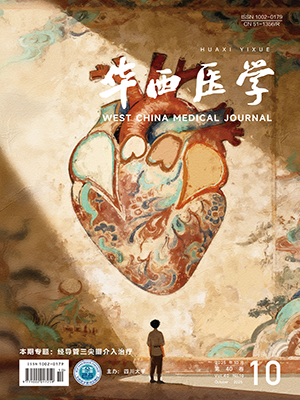| 1. |
Engel J. Mesial temporal lobe epilepsy:what have we learned?[J]. Neuroscientist, 2001, 7(4):340-352.
|
| 2. |
Eid T, Thomas MJ, Spencer DD, et al. Loss of glutamine synthetase in the human epileptogenic hippocampus:possible mechanism for raised extracellular glutamate in mesial temporal lobe epilepsy[J]. Lancet, 2004, 363(942):28-37.
|
| 3. |
华勇. MRI对诊断癫痫患者海马硬化的应用价值[J]. 中国实用医药, 2011, 6(26):30-31.
|
| 4. |
李文华, 沈天真, 陈星荣, 等. 海马硬化的MRI诊断[J]. 中华放射学杂志, 2000(12):44-47.
|
| 5. |
Yang T, Zhou D, Stefan H. Why mesial temporal lobe epilepsy with hippocampal sclerosis is progressive:uncontrolled inflammation drives disease progression?[J]. J Neurol Sci, 2010, 296(1/2):1-6.
|
| 6. |
Cohen-Gadol AA, Wilhelmi BG, Colliqnon F, et al. Long-term outcome of epilepsy surgery among 399 patients with nonlesional seizure foci including mesial temporal lobe sclerosis[J]. J Neurosurg, 2006, 104(4):513-524.
|
| 7. |
Shorvon SD. The etiologic classification of epilepsy[J]. Epilepsia, 2011, 52(6):1052-1057.
|
| 8. |
Isnard J, Bourdillon P. Morphological imaging of the hippocampus in epilepsy[J]. Rev Neurol (Paris), 2015:S0035-3787(15)00027-2.
|
| 9. |
Blumcke I, Cross JH, Spreafico R. The international consensus classification for hippocampal sclerosis:an important step towards accurate prognosi[J]. Lancet Neurol, 2013, 12(9):844-846.
|
| 10. |
Vezzani A, French J, Bartfai T, et al. The role of inflammation in epilepsy[J]. Nat Rev Neurol, 2011, 7(1):31-40.
|
| 11. |
Silveira G, de Oliveira AC, Teixeira AL. Insights into inflammation and epilepsy from the basic and clinical science[J]. J Clin Neurosci, 2012, 19(8):1071-1075.
|
| 12. |
Sinha S, Patil SA, Jayalekshmy V, et al. Do cytokines have any role in epilepsy?[J]. Epilepsy Res, 2008, 82(2/3):171-176.
|
| 13. |
Kan AA, de Jager W, de Wit M, et al. Protein expression profiling of inflammatory mediators in human temporal lobe epilepsy reveals co-activation of multiple chemokines and cytokines[J]. J Neuroinflammation, 2012, 9:207.
|
| 14. |
卢峰, 王如密. 颞叶癫痫海马硬化凋亡机制的研究进展[J]. 福州总医院学报, 2007(增刊1):132-134.
|
| 15. |
Teocchi MA, Ferreira AÉ, da Luz de Oliveira EP, et al. Hippocampal gene expression dysregulation of Klotho, nuclear factor kappa B and tumor necrosis factor in temporal lobe epilepsy patients[J]. J Neuroinflammation, 2013, 10:53.
|
| 16. |
Zhao B, Schwartz JP. Involvement of cytokines in normal CNS development and neurological diseases:recent progress and perspectives[J]. J Neurosci Res, 1998, 52(1):7-16.
|
| 17. |
McCoy MK, Tansey MG. TNF signaling inhibition in the CNS:implications for normal brain function and neurodegenerative disease[J]. J Neuroinflammation, 2008, 5:45.
|
| 18. |
Baune BT, Konrad C, Grotegerd D, et al. Tumor necrosis factor gene variation predicts hippocampus volume in healthy individuals[J]. Biol Psychiatry, 2012, 72(8):655-662.
|
| 19. |
Pozniak PD, White MK, Khalili K. TNF-α/NF-κB signaling in the CNS:possible connection to EPHB2[J]. J Neuroimmune Pharmacol, 2014, 9(2):133-141.
|
| 20. |
Bao Y, Cao X. The immune potential and immunopathology of cytokine-producing B cell subsets:a comprehensive review[J].J Autoimmun, 2014, 55:10-23.
|




